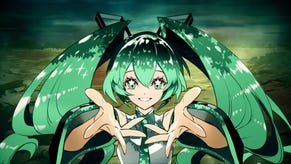Magic: The Gathering in 2020: Strong sets struggle to steer the card game away from a worrying direction
Community’s resilience during lockdown undermined by divisive design and controversial business decisions.
It’s probably fair to assume that nobody quite realised how difficult 2020 was going to be. Nobody’s had a particularly good time of it and, as many of us are stuck in countries where the people in charge seem to have underestimated the toll of the pandemic, it’s important to take stock and remember that a lot of us are doing the best we can. The same is true of the games we play, especially the ones we normally play in person. Magic: The Gathering has had what you could probably say is a good year by all accounts, but it’s not been without some troubles.
The year kicked off while Pioneer was just picking up steam, and a lot of people were excited about the potential of the new format. Paper MTG was doing well thanks to this and formats such as Commander, Standard and Modern; it all looked as though things would be gravy with some of the exciting sets we had coming up.
The first set of the year was Theros: Beyond Death, released in January. As a return to the setting inspired by Greek mythology, a lot of people were quite excited about the whole thing. There were some heavy hitters from the set too, with the likes of Uro, Titan of Nature’s Wrath really cementing Simic, which is Blue and Green, as a powerhouse in Standard and beyond. Of course, a lot of people felt that having one single definitive best deck in the format was less than ideal, but that didn’t really get addressed for a few more months.
Next up was Unsanctioned, which saw UnMTG become a proper game with players mashing together two different 30-card theme decks to create one of the most definitive Un-experiences around. While it wasn’t a full set as such, it still gave players a chance to experience MTG in a different way, and it made for an entertaining way to introduce new people to the game.
If there was a point at which players started to feel as though this year would be an odd one, in terms of MTG anyway, it was probably after the release of Ikoria.
Ikoria: Lair of Behemoths was the next proper set. Ikoria turned out to be very appropriately named due to the sheer size of the impact it made on MTG, as it sort of broke Magic for a little bit during the spring. This is because it introduced the world to companions. This was a mechanic so absurd that not only was one of the cards, Lutri, the Spellchaser, actually banned before the set even released, but they actually had to change the rulings for the mechanic entirely once it was out in the wild. In fact, Companion was so impactful that you can still find it trashing people in most formats now, even if you’re looking for a budget deck. If there was a point at which players started to feel as though this year would be an odd one, in terms of MTG anyway, it was probably here.
The summer’s Core Set 2021 was another set that brought out the big guns. There were some obscene cards in the set, and it felt defined by obnoxious creatures and potentially broken planeswalkers. While the set was aimed at helping newer players into the fold, the re-introduction of Phasing still seems like an odd choice. Phasing - which sees cards treated as if they don’t exist before the player’s next turn - remains one of the most misunderstood mechanics from a gameplay standpoint, and it’s one of the reasons why there are so few cards that include the keyword.

Jumpstart - released digitally in July, and then actually on October 16th - might be the most fun a new player can have with MTG. The ease of use and simple gameplay makes for a game mode that is perfect for newcomers to the game. However, despite how good it was, the difference in card selection between the Arena version and the normal version left something of a sour taste.
While the card selection in Double Masters was truly wonderful, the sheer expense of it made it borderline offensive.
The aim of any business is to make money, but nowhere was that more apparent this year than Double Masters. While the card selection in the August set was truly wonderful, the sheer expense of it - at £260 a booster box and nearly £100 for a VIP booster pack - made it borderline offensive. This is a set that should have helped to lower the cost of the much-needed reprints featured. Instead, it was a set that made players feel as though Wizards of the Coast viewed them as bank accounts and little more.
It’s at this point you might be thinking “the MTG never ends” - and you’d be right. September brought us back to another much-beloved plane thanks to Zendikar Rising. This set lacked some of the punch of the previous sets this year, but Lotus Cobra proved to be the straw that broke the camel’s deck, mostly thanks to its Landfall ability that gives the player one mana of any colour whenever a land card enters the battlefield. It effectively pushed any deck with Green into even higher heights. Also, we got a brand new Omnath - one of the best creatures in MTG, fight me - who was also way too good for, well, Magic.

A lot of players play Commander. In fact, it’s the most popular format in MTG. It makes sense then, that 2020’s Commander decks would be a blast to play. Each deck offered a very different gameplay experience, and they’re all quite a lot of fun to play around with. The mutate-based Enhanced Evolution deck, in particular, was a standout, and the release continued to support 2020 being an excellent year to be a Commander player.
Commander Legends could well be the highlight of the year.
Commander Legends, which launched in November, could well be the highlight of the year as the first-ever draftable set for the format. In a year where many felt as though Commander was getting all of the good toys anyway, it’s hard not to feel like this was the nail in the coffin for that idea. Wait, in a good way. Maybe the tail on the pinata? Anyway, the set is great, even if it doesn’t always work as an actual draft.
On top of all of this, we saw Kaladesh Remastered in MTG Arena, Historic improve significantly as a format and even a bunch of Secret Lair drops.
It’d be wrong to discuss MTG’s 2020 without discussing the fact that we got brand-new cards in a time-limited premium product. When Wizards of the Coast partnered with The Walking Dead for one of those Secret Lair drops, people were generally pretty happy about the concept. However, rather than simply reskinning current cards, Wizards decided that it would be better to make new cards.
The issue with this is that it’s hard to get your hands on a Secret Lair set as it is, which means there are only a limited amount of these cards in existence. Not to mention the fact that the set cost around £50 and you only got five cards. This made it unaffordable for a lot of people, and it definitely aggravated some of the negative sentiments against Wizards of the Coast regarding pricing and accessibility. While everyone understands that MTG is a game designed to make money, it’s still disheartening for a lot of fans when it’s this blatant.

Despite how good a lot of the sets this year were in a vacuum, the effect that many of them have had on the competitive formats has been woefully unbalanced. At the time of writing, there are eight cards banned in Standard. This, as many people are taking it, shows just how peculiar the decisions being made by the design department are.
Despite how good a lot of the sets this year were in a vacuum, the effect that many of them have had on the competitive formats has been woefully unbalanced.
People have lost faith in Wizards to a degree after so many bannings and some very obvious money-making schemes in the form of the Secret Lairs - and, in a year when paper MTG has been hit incredibly hard, it’s difficult not to worry about it. A lot of us are missing going to our FLGS and sitting down with friends, but it’s not something you can do, and people are falling away from formats such as Standard and Modern because they end up dominated by whatever the latest overpowered creature card is.

Of course, people persevere anyway, and thanks to things like SpellTable, Discord, MTG Arena, MTG Online and Tabletop Simulator, MTG is still doing well. At least, plenty of people are still playing MTG, and it’s these online tools that make that possible. SpellTable is probably the best possible thing to happen to MTG this year, allowing players to set up webcams or use their phones to play with their paper MTG cards over the internet. It’s all kinds of wonderful.
2020 is a year where we’ve seen loads of exciting cards, sets and even new ways of playing. It’s also a year where paper Magic has become unsafe, online Magic remains expensive and the vast majority of the solutions have come from the people who love to play the game. It’s been a strong year set by set, and a good year overall for a lot of fans, but it’s not been without its problems. It feels as though there really needs to be a change to the way cards are designed to stop players feeling as though power-creep is eternal and bannings are essential.









